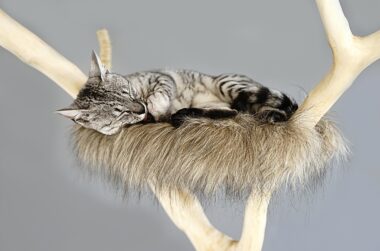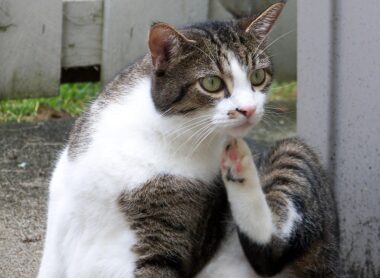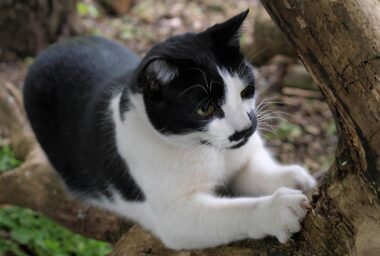How to Train Your Cat to Use Scratching Toys
Training your cat to use scratching toys can greatly improve its behavior and protect your furniture. First, it’s essential to choose the right scratching toy. Look for toys that mimic natural scratching surfaces, like corrugated cardboard or sisal. Cats prefer stability, so ensure the toy is sturdy and won’t tip over while they scratch. Place the scratching toy in an area where your cat likes to spend time. An ideal position is near their favorite resting spot or a sunlit area. If you have multiple cats, consider providing multiple scratching options to accommodate everyone. Observe your cat’s scratching habits, which will help in deciding where to position these toys. They often scratch after waking up or following play sessions. To make scratching toys more enticing, you can enhance them with catnip or attractive textures. Encourage use through positive reinforcement, like gentle praise or treats immediately after they use the toy. In time, your cat will develop a habit of using the scratching toy instead of your furniture, making both you and your pet happier. Consistency is key, so keep working with your feline friend to achieve the desired results.
Additionally, creating a positive association with the scratching toy can motivate your cat to use it more frequently. When your cat starts using the scratching toy successfully, reward them immediately. This could be through treats or lots of gentle petting. Cats are more likely to repeat behaviors that yield rewards. If your cat begins using the scratching toy, make it a point to praise them exuberantly. Also, ensure you keep the toy in good condition, as worn toys may lose their appeal. Regularly check for damage and consider replacing them if necessary. You should also supervise your cat during its playtime to intervene if it attempts to scratch furniture instead. Gently redirect them to the scratching toy without scolding, reinforcing positive behavior instead. Another helpful tip is to try different types of scratching toys since cats can be particular about textures and styles. Offering options encourages exploration and choice. Some cats prefer vertical scratching surfaces, while others favor horizontal ones. Additionally, keeping your home environment interesting can help enhance your cat’s play and exploration instincts, ultimately leading to a more satisfied feline.
Understanding Cat Behavior
Understanding your cat’s natural scratching behavior plays a pivotal role in effective training. Scratching is instinctual for cats and serves multiple purposes. It helps them shed old claw sheaths, marks territory through scent glands in their paws, and provides an excellent stretch for their muscles. Recognizing this natural inclination is crucial when selecting and training your cat with scratching toys. Never scold your cat for scratching inappropriately; instead, redirect them whenever possible. Display a more suitable scratching toy nearby and encourage them using enticing methods. Play sessions can complement scratching exercises, engaging both their physical and mental faculties. It’s beneficial to understand when your cat feels the need to scratch, such as after waking from a nap or following intense play. During these times, positioning the scratching toy in their direct path can lead to habitual usage. Make your environment conducive to scratching by providing tearing surfaces, which can also prevent damage to your furniture. When your cat discovers it has suitable outlets for its scratching urges, you will observe a reduction in unwanted scratching behavior around the home.
It’s important to maintain consistency and patience when training your cat to use scratching toys. Cats may not respond positively or quickly to new toys, which can be frustrating. Continue to try different toys and locations until you find combinations that work. In cases where your cat stubbornly ignores the scratching toy, consider opting for scratchers that engage them visually or audibly. Toys that create sounds or those that have interactive features often draw attention. You can also rotate the scratching toys regularly to keep things fresh and interesting. If a particular toy no longer captivates your cat, swapping it out for a different style may reignite its interest. Additionally, placing the scratching toy in a location with minimal foot traffic can eliminate distractions, helping your cat focus on exploring it. An engaging and stimulating environment can encourage your cat’s natural instincts, promoting healthier scratching habits. Besides, maintaining an environment that satisfies your cat’s physical and environmental needs can significantly enhance its overall well-being, making it not just a trained pet, but a happy one.
Utilizing Tricks and Tips
Utilizing tricks and tips can make the process of training your cat both enjoyable and effective. One interesting method is incorporating play into scratching training. Use toys or ribbons to catch your cat’s attention and invite it to explore the new scratching surfaces. Playing with your cat close to the scratching toy can pique its curiosity. The playful vibe creates a relaxed atmosphere that can lead to exploration and successful interaction. Each interaction you have with your cat strengthens your bond while reinforcing the scratching behavior you wish to encourage. Don’t rush this process; allowing your cat to explore at its own pace can yield better results. If your cat successfully uses the scratching toy, make sure to acknowledge its accomplishments with treats or praise. Understanding that not all cats respond similarly, ideas that work for one cat might not produce the same outcomes for another. Be open to experimenting with various strategies. If you notice purging behavior towards your furniture, it’s essential to act quickly to redirect this to appropriate areas, promoting positive reinforcement alongside your training efforts.
Establishing dedicated spots for your cat’s scratching toys can be beneficial in long-term training efforts. These designated areas facilitate easy accessibility for your cat and make it clear where it’s allowed to scratch. Offer a little variety within these dedicated spots, introducing both vertical and horizontal surfaces for diverse engagement. Cats may not enjoy the same surface daily; therefore, introducing alternating scratching materials can maintain their interest. Placing scratching toys near places where your cat spends significant time, such as on a favorite perch or near the entrance, can lead to increased visibility and usage. Creating a space for play leads to a well-adjusted and engaged cat that will choose its toys, thus eliminating your furniture from its scratch agenda. Keeping them visible promotes exploration and curiosity. If necessary, retrain your cat by gently removing it from unwanted scratching spots and revisiting your tactics consistently. Once acclimated to these trained behaviors, you’ll notice a much more harmonious living environment where both your cat and home fixtures feel secure from damage.
Conclusion
In conclusion, effectively training your cat to use scratching toys can create a more harmonious home environment. With understanding and patience, you can significantly decrease unwanted scratching behaviors while providing your cat with an outlet for this natural instinct. Begin by selecting appropriate scratching toys that cater to your cat’s preferences. Utilize techniques such as positive reinforcement, making good use of praise, treats, and playtime. This helps instill a habit of using the toys rather than your furniture. Be creative in placing scratching toys strategically around your home based on your cat’s behavior and preferences. Following consistent behavioral training is critical, as cats thrive within routines and familiar environments. Additionally, be aware of their natural behaviors that may dictate their need to scratch for marking territory or shedding old claw sheaths. Continuously provide variety and consider incorporating interactive scratching surfaces to keep your cat engaged. In the end, through patience and continuous encouragement, you will observe a significant improvement in your feline’s behavior and a happier coexistence in your home.
Ultimately, remember that every cat is different, and what works for one may not work for another. Embrace the process and honor your cat’s unique personality as you introduce scratching toys into their environment. A keen understanding of your cat’s behavior alongside strategic training can lead to successful outcomes, ensuring that your furniture stays pristine while maintaining your cat’s happiness and well-being.





